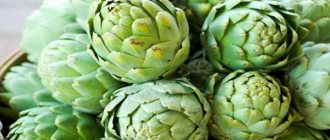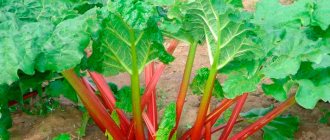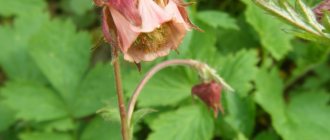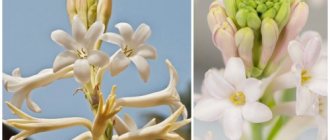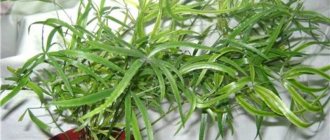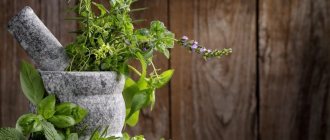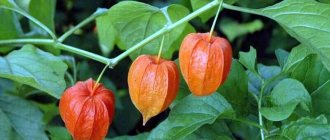The Indians of South America have known the stevia plant for its sweet taste for several thousand years. When Academician N.I. Vavilov, in one of his expeditions to the American continent, drew attention to stevia, he collected and brought its seeds to the USSR. In his report to the government of the country, the academician pointed out the possibility of using the plant for widespread cultivation with further processing in the food industry.
However, the academician himself became a victim of denunciations and slander, was arrested and died in prison from unbearable conditions of detention. All information about stevia was forgotten for decades. Attention was paid to stevia in the 70s and 80s of the last century as a potential natural sweetener and feed crop. Let's try to figure out how to grow stevia yourself and what to care for it.
Useful properties of the plant
Pleasant and sweet in taste, stevia has beneficial properties:
- improves brain function;
- has a beneficial effect on the human nervous system;
- helps strengthen the immune system;
- improves metabolic processes;
- removes toxins from the body;
- has a positive effect on the respiratory and cardiovascular systems;
- cleanses blood vessels from cholesterol;
- reduces blood sugar levels (relevant for diabetics);
- leaves and juice are characterized by antibacterial effects;
- has a beneficial effect on gums and teeth;
- has a general rejuvenating effect on the body.
Contraindications for using the plant are:
- changes in blood pressure;
- individual intolerance;
- allergy.
Stevia varieties
Despite the benefits and sweetness of stevia, gardeners are not yet actively interested in this herb. At the same time, several of its varieties can already be distinguished. Most popular:
- Detskoselskaya. A plant of this species has a height of 50–60 cm. The diameter of the bush reaches 30 cm. You can recognize this stevia by the characteristic pubescence on the stem and its light green color. The leaf is shaped like an ellipse and reaches 4 cm in length. During the flowering period, light beige buds appear on the bushes.
- Dulcinea. The stem of this plant is taller: up to 110 cm. It is round. This variety has specific leaves with a crenate edge. They, like the stem, are covered with hairs. The Dulcinea flower is white in color and reaches 4 cm in diameter.
Less popular, but also well-known varieties of stevia: Uslada, Sofia, Ramonskaya slastena. When processing raw materials, we use advanced technologies and precise formulations to eliminate bitterness and preserve the beneficial properties of the herb.
Planting honey grass
be grown at home and in open ground. Care is not significantly different. Remember! Stevia is native to the tropics; the plant will not survive the winter and will freeze.
Before the onset of frost (in September, before the temperature drops to +10 degrees), the grass should be moved into the house or greenhouse, trying not to damage the earthen ball and roots so that the plant can quickly establish itself in a new place.
The beginning of plant sowing is April. The seeds are placed in disposable cups and after 1.5 months the stevia is planted in a permanent place of growth.
When planting grass at home on a balcony or windowsill, you should adhere to the following recommendations:
- choose a pot of at least 2 liters in volume;
- be sure to arrange drainage of 2-3 cm;
- the soil is suitable from 50% peat compost mixed with a quarter of coarse sand and ordinary soil from the garden;
- fill the pot halfway with soil;
- plant seedlings or cuttings grown from seeds;
- Gradually add soil to the pot as the plant grows.
When the plant reaches a height of 20 cm, it is necessary to trim the main stem located in the center, 5 cm from the top, in the middle of the internode to increase the crown and number of leaves. This trimmed part can be used as a cutting and planted in a pot.
Further care for stevia is the formation of a bush by shortening the shoots by 1/3 or 1/5 every six months. In this case, at least 3 pairs of leaves should remain. To make the plant painless, it is recommended to lubricate the pruning areas with garden varnish or pork fat.
After trimming, the following steps are performed:
- a greenhouse is made from a plastic bottle or bag;
- the pot with the plant is removed from the area exposed to direct sunlight;
- when fresh branches begin to grow, the greenhouse is removed for a couple of hours a day;
- The plant should be brought into the sun gradually to prevent the formation of burns on the leaves (it is better to start with partial shade).
In the summer, you can plant the plant in beds in the ground or bury pots in the ground. The depth of the holes is about 10-15 cm with a distance of 50 by 50 cm.
How to grow stevia in the countryside in open ground
Prepare the seedlings as described above.
- Stevia should be planted on the ground at an average daily temperature of 15-20 degrees. Usually this is May or June.
- Dig up the soil and remove all weeds. Sweet grass is very difficult to tolerate in proximity to other plants.
- Seedlings need to be planted to a depth of 6 centimeters. The distance between plants is about 30 centimeters. Add 300 grams of humus to each hole. After planting, pour a liter of warm water and cover with dry soil no higher than a third of the plant’s height.
- Cover the grass planting site with agrofibre for 2 weeks.
When growing honey grass on the ground, it is important to remember that it is cold intolerant. Therefore, for the winter, the roots will need to be dug up and stored until the next planting. This method of growing stevia is more effective than growing stevia every year from seeds, since every year the roots will grow stronger and produce an increasingly larger harvest.
The roots survive wintering in a box with soil, at a temperature of 4 to 8 degrees, and at a humidity of about 80. Usually such conditions are in a cellar or basement .
Feeding honey grass
It is advisable to apply mineral fertilizers to the soil once The condition of stevia improves when fertilized with slurry at the rate of 1 liter per bucket of water or fresh mullein.
to carry out the procedure once every 2 weeks. Each bush receives 0.5 liters of fertilizer. Interesting! Fertilizing increases the number of leaves by 80%.
We have prepared an interesting article about the medicinal properties of Kalanchoe pinnate.
Passion flowers require some care. More about this.
Why don't calla lilies bloom at home? https://sad-doma.net/houseplants/dekarativnotsvetushhie/kalla.html Our answer is already ready for you.
Planting and caring for stevia
- Planting: sowing seeds for seedlings - at the end of March or early April, transplanting seedlings into the ground - at the end of May or early June.
- Flowering: rarely blooms in cultivation.
- Lighting: bright sunlight.
- Soil: light and loose, slightly acidic (pH – 5.5-6.0). The soil should not contain lime.
- Watering: the soil on the site should be slightly moist at all times.
- Feeding: every two weeks with a solution of mullein or bird droppings. In autumn, compost or humus is added to the soil.
- Reproduction: seeds and cuttings.
- Diseases: black leg.
- Pests: plant is resistant.
- Properties: the plant has a sweet taste and medicinal properties.
Read more about growing stevia below.
Choosing a landing site
One of the main conditions for the comfortable existence and active growth of stevia is good lighting and warmth at the place of growth. Ideal temperature +22+28 degrees.
Optimal places for planting honey grass: windows facing south and southwest, at home, the direction of the beds from north to south and their location on the southern and western slopes for growing in the country, in open ground.
In the garden, the optimal place for planting stevia is the area where legumes used to grow.
Preparing to grow stevia from seeds
There are two main steps that, if done correctly, will ensure a good chance of grass germination.
- Soil preparation. To create a soil similar to natural for stevia, you need to mix sand, black soil and humus. You can buy them at garden centers, or you can get them yourself in the forest. To obtain humus, remove the top layer of foliage. The soft layer to the hard layer of soil is humus. It is better to buy black soil and sand in the store. You need to mix the components - 2 parts sand, one part humus and 1% chernozem. By the way, on the Internet I saw ready-made soil mixtures specifically for growing honey grass.
- Stevia seeds . Seeds can be bought, and if you grow grass for a long time, you can collect it yourself as a harvest and a nice bonus. When collecting, pay attention to the windage of the seeds. Raise the grain half a meter above the ground and throw it. If it falls quickly, the seed is suitable for cultivation. Slowly flying grain is a barren flower. They are unsuitable for further use.
Harvesting
At the beginning of flowering, 16 weeks after planting, the long-awaited harvest can already be harvested. Usually this is the summer period. The stevia stem is cut at a height of 5 centimeters from the ground. The grass is tied into bunches and dried.
If the grass was grown for seeds, the grains are collected in September.
At the end of September, the roots can be dug up for storage if the cultivation takes place in open ground.
If you grow stevia at home, the leaves can be torn off constantly.
Drying the grass takes no more than 12 hours. You can grind the leaves using a coffee grinder.
Read about the rules for using stevia and its sweetness in this article.
Stevia is an herb that is a natural sugar substitute. Just 2-3 leaves are enough to add a sweet taste to a cup of tea. You can grow stevia in the country, in your garden, or at home on a windowsill or balcony from seeds that can be easily found in the store.
Stevia is a perennial herb from the Asteraceae family. The plant is often called honey grass; it is 400 times sweeter than sugar, but is harmless.
Honey stevia recipes
Stevia recipe for atherosclerosis
Dry and finely ground herb in an amount of 20 grams is brewed with one glass of boiling water in a thermos, then infused for 12 hours. Afterwards, you need to pour the infusion into another container, and add boiling water to the thermos again and leave for 8 hours. After this procedure, the 2 resulting infusions are mixed together. They are eaten only when you want to eat something sweet. This nutrition of the body will normalize blood pressure and reduce the appearance of swelling.
Stevia recipe for ischemia and angina
It is enough to prepare 2 tablespoons and put them in cheesecloth, put them in a container and pour a couple of glasses of boiling water, cook in a water bath for half an hour and leave for 30 minutes. Drink half a glass of the resulting infusion before meals. Excess weight will be burned, vitality and strength will appear, the digestion process and blood pressure will normalize.
Recipe for making stevia alcohol tincture
Pour 2 tablespoons of dry herb with a glass of alcohol and leave for 8 hours, placing in a warm place. Add drops to tea and also use for cosmetic purposes.
How to Use Harvested Stevia Leaves
In the summer, if necessary, it is enough to pick the lower leaves of stevia and add them fresh to tea or herbal tea. And in order to prepare sweet grass for the winter, after harvesting it is dried or an extract is prepared.
Dry the green mass of stevia in the usual way, that is, in a well-ventilated area, avoiding direct sunlight. If you grind dried stevia in a coffee grinder, you get a green powder. The sweetness of two tablespoons of this powder is equal to a glass of sugar.
Stevia alcohol extract is very convenient as a sweetener. To prepare it we need:
- 150 grams of dry stevia leaves;
- 1 liter of vodka or brandy;
- large jar with a lid.
Place the stevia in a jar and fill it with alcohol so that the leaves are submerged 2 centimeters. Mix everything. Close the jar with a lid, shake and leave to infuse for a day. You need to keep an eye on the time, because overexposure threatens the loss of sugars. Then instead of a sweet extract we will get a bitter one. Therefore, after 24 hours it is necessary to strain the infusion. To reduce the alcohol content, the finished extract should be heated over low heat for 25 minutes. But under no circumstances boil! Stevia extract prepared in this way can be stored in the refrigerator for up to 4 months.
Growing stevia in the middle zone, of course, requires some hassle and labor. However, two bushes are enough for a family. And if there are conditions for storing rhizomes or space on the windowsill for two pots, the most difficult stages associated with seedlings will have to be completed only once.
In addition, stevia can not be planted in the garden at all, but grown in a pot as a houseplant. But we’ll talk about this in more detail next time...
We wish you success and great harvests!
Author of the article: Dudko S.G. The article is protected by copyright law. Its reprinting and copying without the consent of the author is a violation of the law. © Dachnye-sovety.ru
SHARE YOUR COUNTRY TIPS AND GARDEN TRICKS WITH YOUR FRIENDS:

